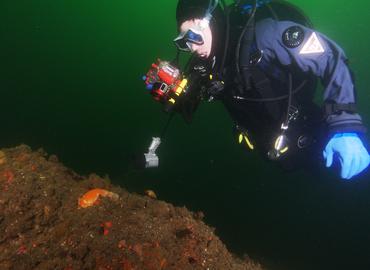REEF members are at the heart of our grassroots marine conservation programs. Over 50,000 divers, snorkelers, students, and armchair naturalists stand behind our mission.
REEF volunteers survey sites in the San Juan Islands. This data is analyzed by SeaDoc and REEF to analyze changes happening at these sites.
REEF is proud to partner with over 130 dive shops, dive clubs, individuals, and other organizations as REEF Field Stations.
Have you joined a Fishinar yet? These popular online REEF webinar training sessions provide fishie fun in the comfort of your own home. Fishinars are free, and open to all REEF members. You need to register for each session you want to attend. No special software is required, just a web browser. Upcoming sessions include:
Lesser Known Fish of Cozumel - October 17
Feel the Beat! The Top 12 Drums & Croakers of the Caribbean - October 29
A few weeks ago, the REEF Volunteer Fish Survey Project database topped 175,000 surveys! We are exicted and proud to have reached this milestone. Together with our 14,000+ volunteers, we have created the largest fish sightings database in the world! This vital dataset is used by marine scientists, researchers, and government agencies to better understand and protect marine resources. The number of scientific publications, requests for data, and policy decisions resulting from REEF data continue to increase.
REEF members are at the heart of our grassroots marine conservation programs. Over 50,000 divers, snorkelers, students, and armchair naturalists stand behind our mission.
This month we highlight Nick Brown. A US Pacific Northwest native, Nick is currently living in St. Kitts. Nick has been a REEF member since 2004 and has since conducted 138 surveys. He is a member of the PAC Advanced Assessment Team. Here's what Nick had to say about REEF:
How did you first volunteer with REEF?
Summer may be at an end, but that doesn’t mean a fish enthusiast has to be left in the cold! As part of its ongoing fish identification webinar series, “Fishinars”, Reef Environmental Education Foundation (REEF) will offer three informative, educational, and always amusing presentations over the next few months. “Lesser Known Fish of Cozumel”, presented October 17 at 8 p.m. EST by Tracey Griffin, highlights the eponymous Caribbean critters; “Fish Geek” Jonathan Lavan will showcase uncommon dorsal fins with “Feel the Beat!
After several years of planning and collaborating with local marine scientists and divers, REEF has expanded the Volunteer Fish Survey Project into another region: the South Atlantic States (SAS). Recreational and scientific divers in North Carolina, South Carolina, and Georgia now have survey materials specific to the local ecosystem, including waterproof color ID cards, waterproof survey paper, teaching curriculum, data entry, and online data summaries.




